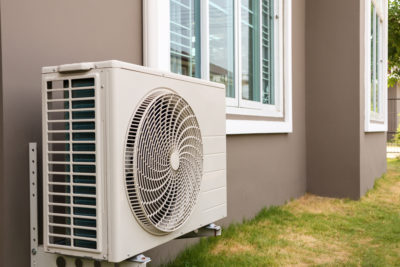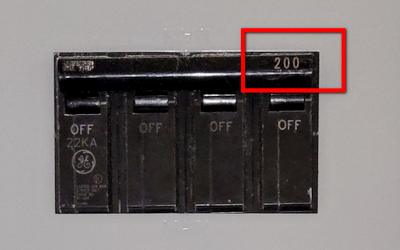What is the cost of a typical heat pump in the Seattle area?
The price of a heat pump depends on a handful of variables. Below we’ll walk through a handful of common scenarios and their associated costs. For each scenario you’ll find 3 price tiers, low, medium and high. The primary difference is the efficiency and comfort of the system. More expensive systems come with variable speed motors and use less energy.
- Are you replacing your existing furnace at the same time? Or is it relatively new?
- Are you looking for a high efficiency or variable speed model?
- Do you have an existing air conditioner you’re replacing?
- Is high efficiency important to you?
Scenario 1 – add a heat pump & keep existing furnace
- Low end – $12,500
- Mid range – $14,000
- High end – $16,000
If your furnace is relatively new and doesn’t need replacing, we can often reuse the furnace in the new system. You’ll save the money by avoiding the cost of the furnace/air handler. However, to install the heat pump, we’ll need to temporarily remove the furnace and reconfigure the ducting to accommodate the coil. The coil transfers the heat from the outdoor unit to the inside of your home. They’re typically about 18-22 inches tall. In some homes, this is a quick process. Simply remove a portion of the supply duct and replace it with the coil box. In homes with tight or unusual ducting, this can add a significant cost factor.
Scenario 2 – add heat pump and replace furnace
If your existing furnace is 7-10+ years old, it makes sense to replace the furnace at the same time. While furnaces can last 15+ years, the older models will not maximize the technology found in modern heat pumps. The majority of modern heat pumps have two stage or variable speed motors. This allows the system to avoid the discomfort created by the heat/AC toggling between full speed and completely off. For this to work well, the heat pump should pair with a variable speed blower motor on the furnace. While these have been around for a number of years, they are relatively rare on older models.
Heat pump + furnace cost:
- Low end – $15,000
- Mid range – $16,500
- High end – $19,500+
Many people are surprised by fairly small difference between replacing vs. keeping the furnace. This is because even if we keep the furnace, we often need to completely remove and reinstall it to fit the heat pump coil. This requires about the same amount of time as installing a new furnace. Therefore, the cost savings is limited to the price of the equipment. The labor cost is the same.
Places to save money
Skip the high efficiency furnace
In the Seattle area, a heat pump will provide the necessary heating 95%+ of the year. The gas furnace will act as a backup and only turn on during the most extreme stretches of cold weather. Because of this, it makes little sense to spend money on a high efficiency gas furnace. It simply won’t operate often enough to cover the cost of the more expensive equipment. Note – while an 80% furnace will suffice, it’s still important to opt for a model with a variable speed motor. This is a minor increase in cost but provides a major boost in comfort in the home.
Is a heat pump worth the upgrade cost?
For most people, the initial goal is to add air conditioning to their home. This is where the value question is centered. Once you’ve decided it’s worth it to pay for adding AC, paying slightly more to upgrade to a combo heat pump/AC is a no-brainer. The additional cost is small (8-10%). This price increase is balanced by the lower utility bills during the winter months. Heat pumps are far more efficient than gas furnaces and will decrease your monthly payments, helping to offset the cost of running the AC in the summer.
Tax credits and rebates are a big factor as well. Both the federal government and Washington State are pushing toward electrification and offering major rebates and credits for moving from gas furnaces (or baseboard heaters) to heat pumps. Installing an AC only system will eliminate the possibility of obtaining these credits.
Heat pump install cost factors
Efficiency ratings
Heat pumps are rated for the efficiency, which directly correlates to the energy required to generate a given amount of heating and cooling. Two ratings apply, HSPF and SEER. SEER corresponds to a unit’s cooling efficiency and HSPF applies to heating. The SEER rating is primary used in product catalogues and marketing literature.
SEER ratings range from 14 to ~25. The national minimum for the northern US is currently 14. For most clients in our climate a SEER rating over 20 is overkill. Our weather is relatively mild, which lessens the value of the ultra high efficiency models. Low end models (i.e 14 SEER) are typically very basic and miss out on 2 stage or variable speed motors. Aside form efficiency problems, they are much less comfortable, as they produce dramatic swings in indoor temperature. For many clients, a mid-range model of 16-20 SEER is a good balance of value vs. performance.
Do you have enough space?
The space surrounding your furnace can significantly impact the cost of installing a heat pump. The coil on a heat pump adds ~20-30 inches of vertical height to an existing furnace. If the current ducting is tight, custom ductwork may be necessary to fit the new equipment. Below is an example of an existing furnace with sufficient room for a heat pump coil.
In other scenarios, it’s a bit more tricky. Sometimes there simply isn’t enough vertical space with the existing ducting. In these situations we’ll need to reconfigure the ducting to fit the new coil. Below is an example of a more challenging installation. Notice how there isn’t much space above or below the existing furnace. Substantial changes to the ducting would be necessary to accommodate the new coil.
Possible solutions for tight spaces
If space is minimal, installing a pure heat pump (no gas) is a good solution. These units are roughly the same size of an existing furnace and can fit without major duct modifications. The maximum heating capacity of a heat pump is less than a dual fuel option, so they’re best for small to mid-sized homes.
Electrical requirements – are you upgrading/replacing an existing AC system?
Heat pumps require quite a bit of electricity. 35-50 amps is typical for most installations. If you have an existing air conditioner and you’re looking to upgrade to a heat pump, you might be in luck. There’s a chance your existing wiring will suffice for the new heat pump. If it’s 10+ years old, it’s likely missing modern electrical safety requirements and will need an upgrade. Either way, it’s easier to replace an existing line than running an entirely new cable, as the conduit is already in place.
If this is the first AC/heat pump installed on your system, we’ll need to add an electrical line to the heat pump. This typically costs ~$1,200. If your electrical panel is old or undersized, a panel replacement may be required. The average price is $3,500. The cost will increase if you need to upgrade the size of the panel (i.e your existing panel is 100 amp). Thankfully, this is fairly rare.
How to determine your panel size
At the top of your electrical panel you’ll see a large switch. Look for a number printed on the switch or directly above it. In nearly all cases, you’ll see either a 100 or 200. This represents the total amps for your home.
Below is an example of a 200 amp panel




